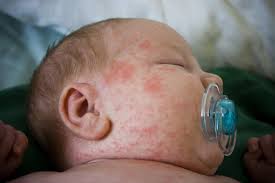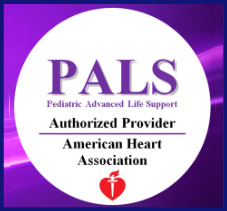Recent Articles
Common skin problems and rashes on babies
 If your baby is suffering from rashes or any other skin problem, donât be scared, as most problems will go away on their own in a few days. However, if the problem persist for more than a week, it is best that you get medical help. Here are some problems that your baby can suffer from:
If your baby is suffering from rashes or any other skin problem, donât be scared, as most problems will go away on their own in a few days. However, if the problem persist for more than a week, it is best that you get medical help. Here are some problems that your baby can suffer from:
Pimples
Babies can get pimples in nose, cheeks, and forehead. Acne can show up in the first few weeks of their life but they usually clear up in few months. Acne has nothing do with whether a child will suffer from acne when they grow up.
At times white spots may appear on the face of the baby. These spots are known as milia. They are also known as Epstein if they appear on the gums and the roof of the mouth. These are usually not dangerous and they disappear in a few weeks.
Blotchy Skin
During the first few days, the baby may get red blotches that contain pus. These blotches are known as erythema toxicum and they are usually harmless. Some babies may have it all over their body while others have these blotches in some parts. These blotches will usually go away within a week.
Some babies may suffer from harmless rashes known as pustular melanosis. These rashes can cause pus-filled pimples that usually break open to form dark spots. Most babies who suffer from these rashes are usually born with it. These rashes will disappear within a week but dark spots caused by rashes can take a few months to disappear.
During winters, some babies can get lacy or blotchy rashes on their torso and limbs. If you take steps to keep your room warmer, these rashes will disappear. Babies who are more than 6 months of age usually donât suffer from this problem.
Rashes
Some babies get heat rashes when they are dressed warmly or when the weather is hot. These pink or red rashes are known as prickly heat and they are usually found in areas that are covered by clothes. These rashes can itch which can make your baby very uncomfortable. To avoid these rashes, you must dress you baby in clothes that are light and lose. Also, give your baby a cool bath at least once a day during summers to avoid rashes.
Wearing wet diapers for a few hours can cause soreness and red rashes on the genitals or bottom of the baby. The stool and urine on the diapers can irritate the skin of your baby. Babies can also suffer from diaper rashes when they in same position for several hours. Diaper rashes can also be due to infection caused due to yeast or bacteria. If your baby is suffering from diaper rashes, you must take extra care to protect your baby from infection causing bacteria. Also, make sure you change their diapers every few hours and keep them as dry as possible.
Some babies have rashes on their face near the mouth and the chin. These rashes could be caused by spitting up or drooling. You can get rid of these rashes by cleaning your babies face as often as possible especially after your baby spits up or eats.
Scaly Scalp
Many babies get have a crusty or scaly skin on the top of their head. This is a normal build-up of scales, oils and dead cells. Like other problems, you can treat this problem by using mineral oil or shampoo. This is not a serious problem, as the scaly skin will usually disappear in a few months.
How PALS Certification Program help you
 Anyone who intends to work directly with kids in healthcare field should join PALS certification program. This program is created by American Academy of Pediatrics and American Heart Association to help health care professionals in treating and assessing pediatric patients. The program is designed to help healthcare providers streamline the care and treatment of children so as to ensure that providers have all the skills and training they need to deal with injuries in children who require critical care.
Anyone who intends to work directly with kids in healthcare field should join PALS certification program. This program is created by American Academy of Pediatrics and American Heart Association to help health care professionals in treating and assessing pediatric patients. The program is designed to help healthcare providers streamline the care and treatment of children so as to ensure that providers have all the skills and training they need to deal with injuries in children who require critical care.
What is PALS?
PALS is the acronym for Pediatric Advanced Life Support. It is a program that is developed by American Academy of Pediatrics and American Heart Association to equip healthcare providers with skills required to treat infants and children who are suffering from critical conditions or injury. People who want to do this program can do an online course or attend two day class that is available in most hospitals.
What they teach
This program teaches healthcare providers how to respond to critical situations. One of the things that students of this program learn is child CPR and the proper use of defibrillator. Students of the program are trained to safely help infants and children who need critical care. Medical personal that donât have experience working with children and infants can just this program to learn how to treat children. The skills they learn can be applied when they work with infants and children.
How to get Certification
You can earn your PALS certification today by completing an online course or by attending 2-day classes that is offered by several hospitals and medical schools. Students who are a part of this program participant in several standard scenarios and they are graded based on the ability to apply their knowledge to these situations. To pass the course and receive certification, they must demonstrate their ability to deal with critical care procedures.
Material
When you have successfully completed your course, your information is processed and you will receive a certification card. This card is a proof that you have completed the required number of hours and have passed your final exam. This certification is valid for two years. At the end of 2 years, certified individuals must take a refresher course and pass an exam.
Who must do this certification course
PALS certification program can help health care employees like pediatricians, nurses and physicians that are involved in administering healthcare to infants and children. However, this course is not limited to healthcare professionals as even people who not have medical knowledge can complete this program.
